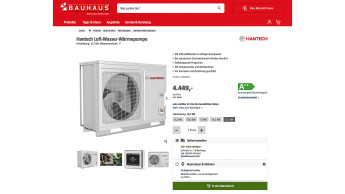For a long time the sector failed to recognise the problem: how are growth and development achieved if only consumables are in demand by households, and these households purchase only replacement items? If the target market made up of DIY enthusiasts and hobby gardeners already has everything it needs in the way of drills and precision tools, lawnmowers and handcrafted box tree shears? It has taken retail companies in the classic DIY countries an age to adjust to this situation. Retail areas have been expanding for years, even though sales per square metre started to decline long ago.
A temporary boom occurred in Germany after the Berlin Wall came down, but even (and especially) here, the growth in retail area was excessive.
The fall of the Iron Curtain also eased the pressure on DIY store operators from other European countries. It suddenly became possible to attain the growth rates that were no longer feasible at home in neighbouring states, in the starved markets of eastern Europe.
The example of Bricostore shows all too clearly, however, the weakness of a strategy that seeks growth by switching to new markets. Many companies, including Bricostore, did not survive the weakening of the economies in eastern Europe caused by the 2008 recession.
This is an extreme case, but it shouldn't blind us to the basic problem that hungry markets are not stable markets, and at some point they will become saturated. Then even the old retailing call to arms of "Cut prices!" is no longer of any assistance, because retailers apply this rule not just to selling prices, but also to purchase prices. They are really saying that "Cut the purchase price" means "Cut the product quality". And somewhere down the line this means "Cut profits" - not least the profits of those who are supposed to deliver innovation: the manufacturers.
But how are…

 Menü
Menü















 Newsletter
Newsletter